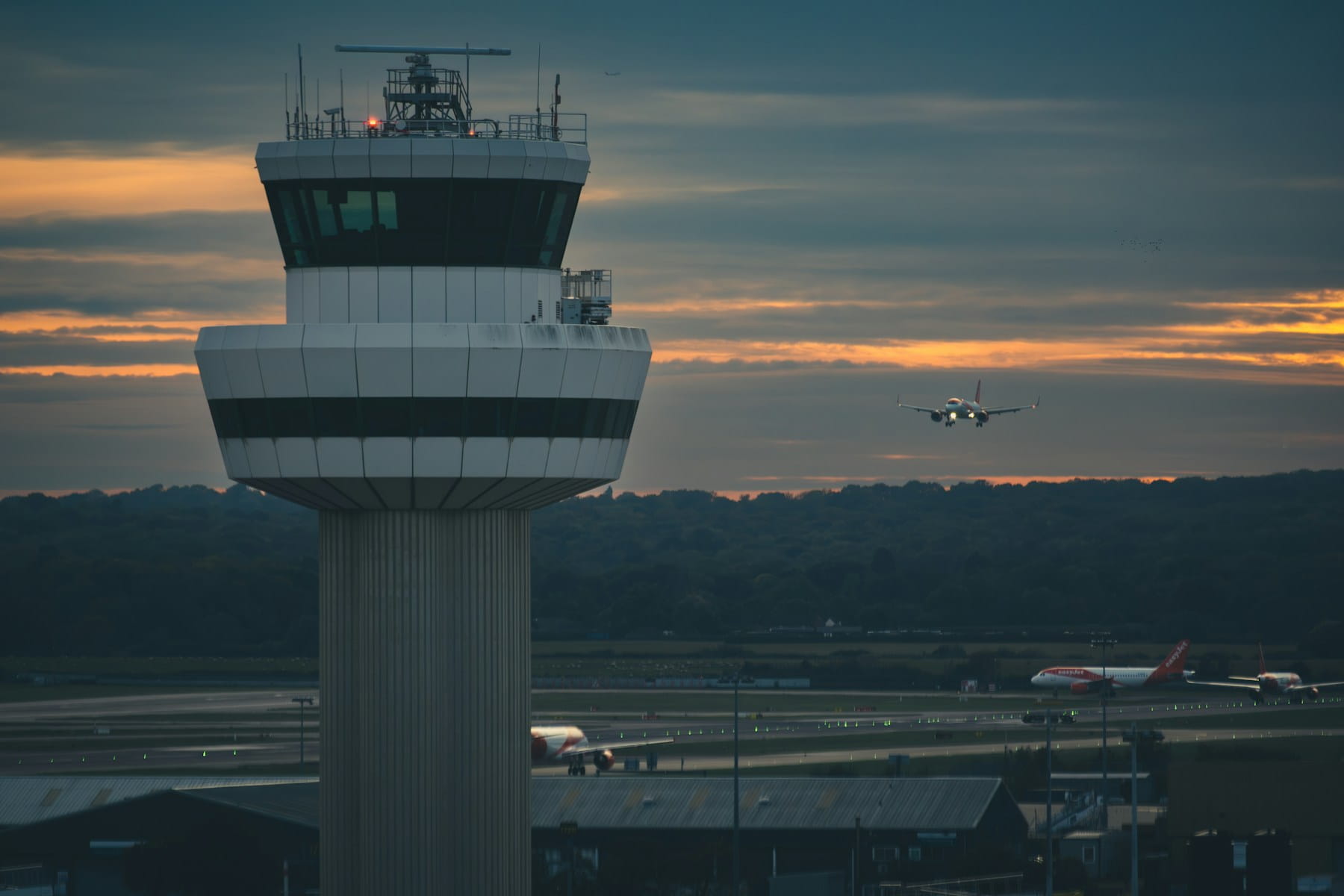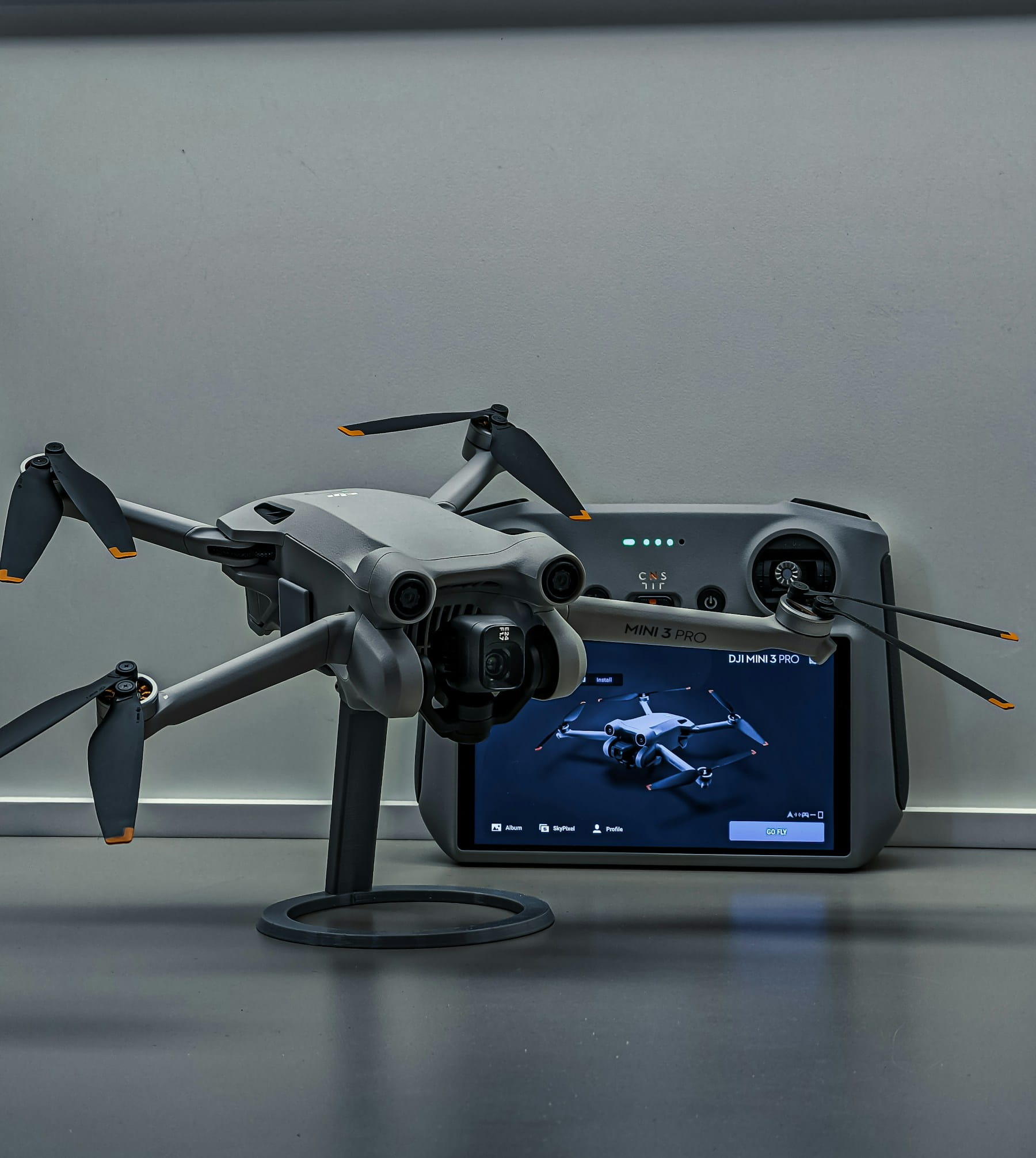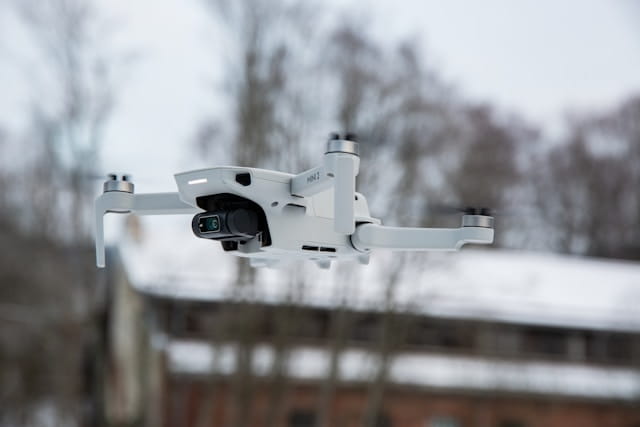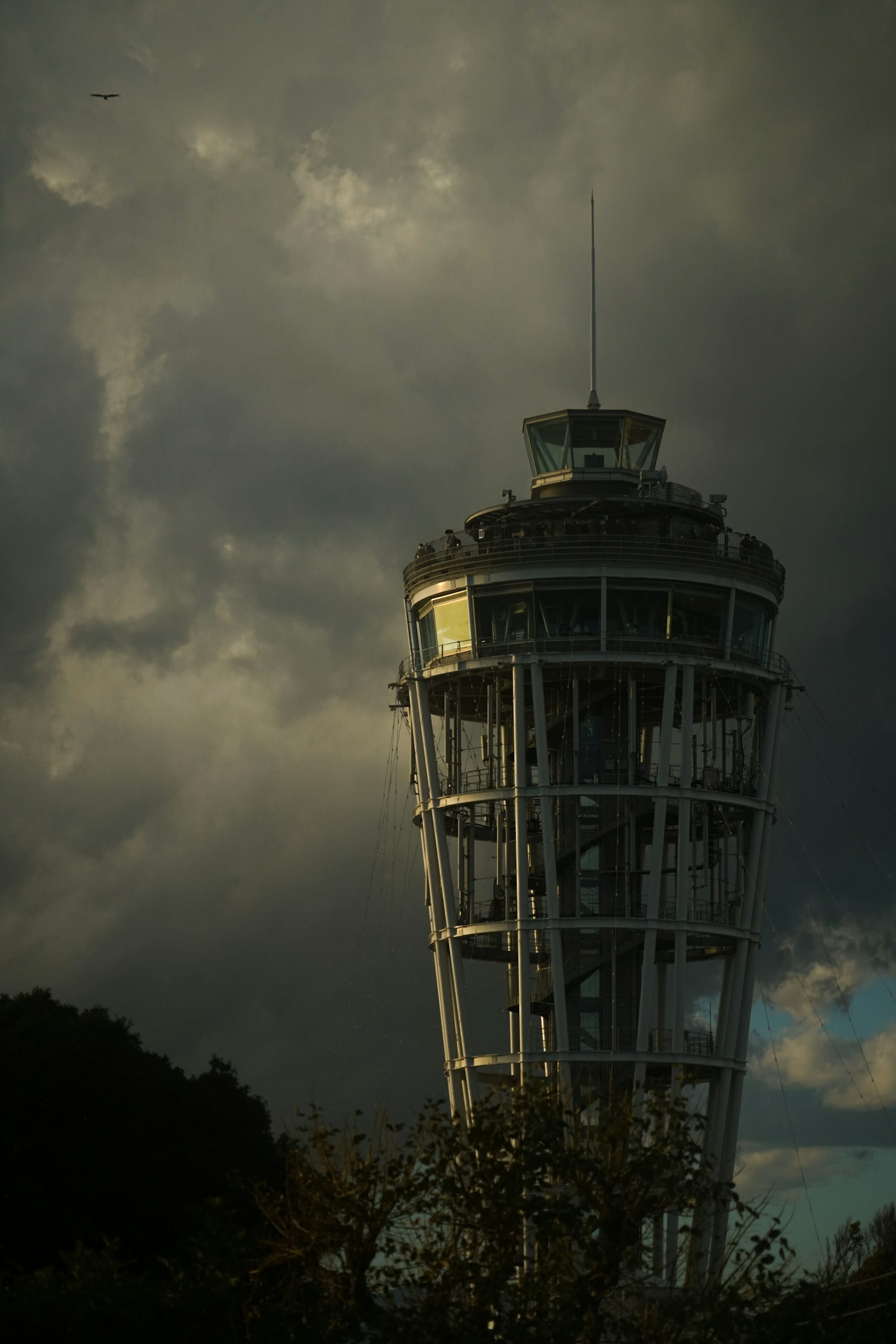Learn how to file a NOTAM effectively for aviation activities, including drone operations, fireworks, and construction, ensuring safety, compliance, and proper airspace notification procedures.
Notifying other aircraft of planned operations isn't just good practice—it's often required by aviation authorities. Whether conducting drone missions, organizing fireworks displays, or launching model rockets, understanding how to file a NOTAM can mean the difference between safe operations and airspace violations.
NOTAMs (Notice to Airmen) serve as the aviation industry's bulletin board. They alert pilots to temporary changes, hazards, or activities that could affect flight safety. But filing one isn't as straightforward as posting a message online. The process varies depending on your operation type, location, and regulatory framework.
Just as understanding Remote ID compliance is essential for legal drone operations, proper NOTAM filing ensures other aircraft know about your activities and can plan accordingly.
Table of contents
- Understanding NOTAMs and when they're required
- Different types of NOTAM filing procedures
- Filing procedures for drone operations
- Traditional NOTAM filing process
- Required information for NOTAM filing
- Step-by-step filing procedures
- NOTAM filing timelines and requirements
- Common mistakes to avoid
- Special considerations for different activities
- International NOTAM filing procedures
- Technology and NOTAM filing
- Regulatory compliance and legal considerations
- Practical implementation tips
Understanding NOTAMs and when they're required
Not every aviation activity requires a NOTAM. The key lies in understanding whether your operation poses a potential hazard to other aircraft or temporarily changes normal airspace conditions.
Activities that typically require NOTAMs include:
- Drone operations above 400 feet AGL
- Fireworks displays
- Model rocket launches exceeding specific altitudes
- Laser light shows
- Construction activities near airports
- Temporary flight restrictions for special events
The confusion often starts with determining jurisdiction. In the United States, for example, drone operators under Part 107 regulations might not need traditional NOTAMs but rather Unmanned Aircraft Operating Areas (UOAs). Meanwhile, operators with specific COAs (Certificate of Authorization) follow different procedures entirely. Understanding these distinctions is as important as maintaining comprehensive compliance with other regulatory requirements.
Think of NOTAMs as temporary modifications to the aviation rule book. They don't grant permission—they inform. If your activity needs authorization from air traffic control or other authorities, secure that first. The NOTAM simply broadcasts your presence to other airspace users.
Different types of NOTAM filing procedures
Aviation operates on precision, and NOTAM filing reflects that reality. Different operations follow distinct pathways, each with specific requirements and procedures.
UOA filings for drone operations
Most commercial drone operations under Part 107 regulations use UOAs rather than traditional NOTAMs. These appear on flight briefing reports just like NOTAMs but follow streamlined filing procedures through Flight Service.
UOAs work well for routine drone operations. They alert manned aircraft to your presence without requiring phone calls or complex coordination. The online system makes filing straightforward, assuming you have all required information ready.
Traditional NOTAM procedures
Traditional NOTAMs require phone contact with Flight Service. This method applies to activities outside standard drone operations—fireworks displays, rocket launches, construction projects affecting airspace.
The phone-based system allows for more complex coordination. Flight Service specialists can help format information correctly and ensure proper distribution. But it requires more preparation and can take longer to process.
Distance NOTAMs
Distance NOTAMs specify hazardous areas using geographic references—airports, navigation aids, or specific coordinates. They're particularly useful for activities covering large areas or multiple locations.
These NOTAMs require precise location data. You'll need latitude/longitude coordinates, distances from nearby airports or navigation aids, and clear boundaries for affected areas.
Filing procedures for drone operations
Drone operations represent the fastest-growing segment of aviation, but their NOTAM requirements often confuse operators. The filing process depends heavily on your operational authority and flight parameters.
Part 107 standard operations
Standard Part 107 operations typically use UOAs filed through Flight Service's online portal. The process begins at 1800wxbrief.com, where operators create accounts and access UAS-specific filing tools.
The online form requests standard information: operation dates, times (in UTC), altitude limits, geographic boundaries, and contact details. The system guides users through each field, providing formatting help and explanations.
After submission, the system displays your UOA on a sectional chart for verification. This visual confirmation prevents location errors that could affect flight safety. Once confirmed, you receive a reference number for your records.
COA operations
Operators with specific COAs follow different procedures. These authorizations often include NOTAM filing requirements as part of operational approval. The process typically involves traditional NOTAM filing through Flight Service phone lines.
COA holders should review their authorization documents carefully. Some COAs specify exact NOTAM language or require coordination with specific air traffic facilities. Failure to follow COA NOTAM requirements can result in authorization suspension.
Beyond visual line of sight (BVLOS) operations
BVLOS operations almost always require traditional NOTAMs. These operations pose greater risks to other aircraft and need more comprehensive notification procedures. Just as BVLOS operations require specialized authorization, they also demand thorough NOTAM procedures.
The filing process includes detailed flight path information, observer locations, communication procedures, and emergency contacts. Flight Service specialists often work directly with BVLOS operators to craft appropriate NOTAM language.
Traditional NOTAM filing process
Traditional NOTAM filing might seem antiquated in our digital world, but it remains the standard for many aviation activities. The phone-based system allows for real-time coordination and specialist guidance.
Calling Flight Service
The process starts with calling 1-877-4US-NTMN (1-877-487-6866). Flight Service operates 24/7, but calling during business hours often results in shorter wait times.
Have all information ready before calling. Flight Service specialists are knowledgeable and helpful, but they can't file NOTAMs without complete, accurate information. Incomplete calls waste everyone's time and delay the filing process.
Working with specialists
Flight Service specialists understand NOTAM formatting and distribution requirements. They'll help translate your activity description into proper NOTAM language and ensure appropriate distribution.
Don't hesitate to ask questions. Specialists prefer clarifying details during the call rather than issuing corrections later. They can also advise on timing, geographic references, and coordination requirements.
NOTAM formatting and language
NOTAMs use standardized formatting and abbreviations. While specialists handle most formatting, understanding basic structure helps communicate your requirements clearly.
Key elements include:
- Activity type and description
- Geographic location (referenced to airports or navigation aids)
- Altitude limits (mean sea level)
- Effective times (UTC)
- Contact information
Required information for NOTAM filing
Accurate information forms the foundation of effective NOTAM filing. Missing or incorrect details can delay processing or result in inadequate notification to other aircraft.
Location data
Location information must reference established aviation landmarks—airports, navigation aids, or precise coordinates. Descriptions like "near the shopping mall" or "by the highway" don't work in aviation contexts.
The following table shows acceptable location reference methods:
| Reference Type | Example | Usage Notes |
|---|---|---|
| Airport | Within 2 NM of ABC airport | Most common for local operations |
| Navigation aid | 15 NM from XYZ VOR on 090 radial | Good for operations away from airports |
| Coordinates | 40°45'00"N 073°59'00"W | Required for some filing systems |
| Sectional chart landmarks | 3 NM SE of Tower ABC | Useful for recognizable features |
Altitude specifications
All altitude information must be in mean sea level (MSL). This standardization prevents confusion between different elevation references. If you typically work in above ground level (AGL) measurements, convert to MSL before filing.
Check sectional charts or aviation databases for local field elevations. Add your AGL altitude to field elevation for MSL calculations. When in doubt, provide both measurements and let specialists confirm conversion accuracy.
Timing requirements
NOTAM times must be in Coordinated Universal Time (UTC), not local time. This prevents confusion across time zones and during daylight saving time transitions.
Most filing systems require start and end times. Estimate conservatively—extending a NOTAM is easier than expanding one that's too short. Include setup and breakdown time for activities requiring preparation. Consider integrating NOTAM filing into your standard pre-flight checklist to ensure consistent compliance.
Contact information
Provide reliable contact information for real-time coordination. This might include cell phone numbers, radio frequencies, or operations centers that can be reached during active operations.
Flight Service or air traffic control might need to contact you for coordination or emergency situations. Ensure provided contacts can make operational decisions, not just relay messages.
Step-by-step filing procedures
Filing procedures vary by system and operation type, but certain steps remain consistent across all NOTAM processes.
Online UOA filing
Online filing offers convenience and immediate confirmation for standard drone operations. The process typically takes 10-15 minutes with proper preparation.
- Account setup: Create an account at 1800wxbrief.com if you haven't already
- Navigation: Select UAS tab, then Planning section
- Form completion: Fill all required fields using proper formatting
- Review: Check information carefully before submission
- Map verification: Confirm location appears correctly on sectional chart
- Submission: Complete filing and save confirmation number
The system provides field-level help for formatting and requirements. Use these resources rather than guessing at proper formats.
Phone filing procedures
Phone filing requires more preparation but offers specialist guidance and complex coordination capabilities.
- Preparation: Gather all required information before calling
- Contact: Call 1-877-4US-NTMN and request NOTAM filing
- Information: Provide complete details to specialist
- Clarification: Answer any questions about your operation
- Confirmation: Receive NOTAM number and verify details
- Documentation: Record NOTAM number and filing time
Specialists might ask follow-up questions about your operation. Answer honestly and completely—incorrect information can compromise flight safety.
Multi-day operations
Operations spanning multiple days require careful coordination. Some systems allow single NOTAMs for extended periods, while others require daily filings.
Consider operational flexibility when filing extended NOTAMs. Weather delays might push operations to different days, requiring NOTAM modifications or extensions.
NOTAM filing timelines and requirements
Timing plays a critical role in NOTAM effectiveness. File too early, and NOTAMs might be forgotten by the time operations begin. File too late, and other aircraft might not receive adequate notice.
Minimum advance notice
Most jurisdictions require minimum advance notice for NOTAM filing. Standard requirements range from 24 to 72 hours, depending on operation complexity and local regulations.
Check specific requirements for your location and operation type. Some activities—like major fireworks displays or rocket launches—might require weeks of advance notice for proper coordination.
Recommended filing windows
Filing 48-72 hours in advance provides good balance between timely notification and operational flexibility. This timeframe allows for weather delays while ensuring adequate pilot notification.
For routine operations, consider establishing standard filing schedules. Regular operations benefit from consistent NOTAM patterns that local pilots recognize and expect.
Emergency procedures
Some situations require immediate NOTAM issuance. Emergency procedures exist for urgent safety situations, but they shouldn't become routine practice.
Emergency NOTAMs typically require direct coordination with air traffic control facilities. Have contact information for local approach control or tower facilities if your operations might require emergency coordination.
Common mistakes to avoid
NOTAM filing errors can range from minor inconveniences to serious safety hazards. Understanding common mistakes helps prevent delays and ensures proper notification.
Location reference errors
Incorrect location references represent the most common NOTAM filing mistake. Using obsolete airport identifiers, incorrect navigation aids, or imprecise coordinates can misdirect other aircraft.
Verify all location references against current sectional charts or aviation databases. Airport identifiers change occasionally, and navigation aids are sometimes decommissioned or relocated.
Time zone confusion
UTC conversion errors create confusion and potentially dangerous situations. Double-check all time conversions, particularly during daylight saving time transitions.
Use reliable UTC conversion tools or websites rather than mental calculations. When in doubt, provide both local and UTC times and let specialists verify accuracy.
Insufficient lead time
Last-minute NOTAM filings don't provide adequate notice to other aircraft. Pilots typically check NOTAMs during flight planning, often hours or days before flying.
Plan NOTAM filing as part of your operational timeline. Include filing time in project schedules, just like equipment setup or personnel coordination. Weather delays might affect operations, so review METAR conditions when planning NOTAM timing.
Incomplete information
Missing altitude limits, vague location descriptions, or incorrect contact information can render NOTAMs ineffective. Flight Service can't file NOTAMs with incomplete information.
Create checklists for your operation types. Standard information lists prevent omissions during busy project periods or under deadline pressure. Integrate NOTAM requirements into your broader operational risk assessment procedures.
Special considerations for different activities
Different aviation activities present unique NOTAM filing challenges and requirements. Understanding these distinctions helps ensure appropriate notification procedures.
Fireworks displays
Fireworks displays typically require traditional NOTAMs with specific altitude and timing information. Large displays might need coordination with multiple air traffic facilities.
Include setup and breakdown periods in your NOTAM timing. Fireworks crews often work for hours before and after the actual display, presenting ongoing hazards to low-flying aircraft.
Consider wind conditions when defining geographic boundaries. Fireworks debris can drift significant distances from launch sites, expanding hazardous areas beyond immediate display locations.
Construction projects
Construction near airports requires careful coordination with airport operations and air traffic control. Some projects need ongoing NOTAMs for extended periods.
Crane operations present particular challenges due to height and visibility concerns. Include accurate height information and consider lighting requirements for extended operations.
Coordinate with airport management for projects affecting airport property or operations. Some activities require additional authorizations beyond NOTAM filing.
Model rocket launches
High-power model rocket launches often exceed normal recreational altitudes and require NOTAM filing. These operations need precise timing and location information.
Include recovery areas in geographic descriptions. Model rockets can drift significant distances from launch sites, particularly at higher altitudes with strong winds.
Consider spectator areas and parking when defining operational boundaries. Large rocket launches attract crowds that can affect local traffic patterns and emergency access.
Laser operations
Laser light shows and scientific laser operations require specific NOTAM language about beam characteristics and safety procedures.
Include beam direction, power levels, and safety procedures in NOTAM descriptions. Pilots need to understand potential visual interference and avoidance procedures.
Coordinate with air traffic control for operations near airports or along common flight paths. Some laser operations might require temporary flight path modifications.
International NOTAM filing procedures
International operations add complexity to NOTAM filing procedures. Different countries have varying requirements, systems, and lead time expectations.
ICAO standards
International Civil Aviation Organization (ICAO) standards provide framework for international NOTAM procedures, but individual countries implement these standards differently.
Research specific country requirements well before international operations. Some nations require weeks of advance notice or special authorizations for foreign operators.
Local coordination requirements
Many countries require coordination with local aviation authorities beyond standard NOTAM filing. This might include meetings, site inspections, or additional documentation.
Identify local contacts early in planning processes. Embassy commercial sections, aviation attorneys, or local operators can provide guidance on specific country requirements.
Language and formatting differences
NOTAM language and formatting vary between countries, even when using English. Some nations require translations or dual-language filings.
Work with local aviation professionals for complex international operations. They understand local procedures and can help navigate bureaucratic requirements.
Technology and NOTAM filing
Modern technology is transforming NOTAM filing procedures, but legacy systems still dominate many processes. Understanding both traditional and emerging technologies helps operators choose appropriate filing methods.
Online filing systems
Web-based filing systems offer convenience and immediate confirmation for many operation types. These systems typically include built-in validation and formatting assistance.
Online systems work well for standard operations with predictable parameters. They're less suitable for complex operations requiring coordination or special procedures.
Mobile applications
Mobile apps are emerging for NOTAM filing, particularly for drone operations. These applications often integrate with flight planning tools and operational management systems.
Mobile filing can be useful for field operations or last-minute changes. But ensure reliable internet connectivity and have backup filing methods available.
Integration with operational platforms
Modern drone operations management platforms increasingly include NOTAM filing capabilities. These integrated systems streamline operational workflows and reduce administrative burden.
Integrated systems can automatically populate filing forms with operational data, reducing errors and saving time. They might also provide automated reminders for filing deadlines and renewals.
For drone operators managing multiple missions and complex operational requirements, platforms like DroneBundle offer comprehensive operations management including integrated NOTAM filing capabilities. Such systems help ensure compliance while streamlining administrative processes across entire flight operations.
Future developments
NOTAM systems are gradually modernizing with digital distribution and automated processing capabilities. These developments promise faster processing and better integration with modern aviation systems.
Stay informed about system updates and new capabilities. Early adoption of improved systems can provide operational advantages and better compliance management.
Regulatory compliance and legal considerations
NOTAM filing carries legal responsibilities and compliance requirements. Failure to file required NOTAMs can result in enforcement actions, fines, or operational restrictions.
Enforcement consequences
Aviation authorities take NOTAM violations seriously. Penalties can range from warnings to certificate suspensions or civil penalties, depending on violation severity and safety impact.
Document all NOTAM filings with confirmation numbers and specialist contacts. This documentation helps demonstrate compliance during any regulatory inquiries.
Insurance implications
Some aviation insurance policies require proper NOTAM filing for coverage. Check policy language and discuss requirements with insurance providers before operations.
Failure to file required NOTAMs might void insurance coverage for incidents occurring during non-compliant operations. This risk extends beyond immediate regulatory concerns.
Record keeping requirements
Maintain comprehensive records of all NOTAM filings, including confirmation numbers, specialist contacts, and filing times. These records support compliance documentation and operational analysis.
Consider establishing standard record-keeping procedures for all aviation-related notifications. Consistent documentation practices reduce administrative burden and improve compliance management.
Practical implementation tips
Successfully implementing NOTAM filing procedures requires systematic approaches and attention to both technical and operational details. Start by understanding your specific operational requirements and local regulatory expectations.
Establish standardized procedures for different operation types that include NOTAM filing as a mandatory step. Document these procedures and train all relevant personnel on proper filing techniques.
Create templates and checklists that capture all required information for your typical operations. Standard forms reduce errors and speed up the filing process during busy operational periods.
Maintain current contact information for Flight Service and relevant air traffic facilities. Quick access to proper contacts can be crucial for emergency filings or operational changes.
Integrate NOTAM filing into your broader operational planning processes rather than treating it as separate paperwork. Include filing timelines in project schedules and consider weather contingencies that might affect operations.
For commercial operations, align NOTAM procedures with your safety management systems and overall compliance protocols. Consistent procedures demonstrate systematic operational approaches to regulators and insurance providers.
Why NOTAM Filing Matters for Professional Operations
NOTAM filing has become a fundamental aspect of professional aviation operations, creating responsibilities for safety communication while enabling complex operational capabilities. Understanding these procedures isn't just about regulatory compliance—it's about operating responsibly in shared airspace.
- Safety foundation: Proper notifications prevent conflicts and enable coordinated airspace usage
- Regulatory compliance: Systematic NOTAM filing demonstrates professional operational standards
- Operational access: Many advanced operations require proper NOTAM procedures for authorization
- Professional credibility: Consistent compliance builds trust with regulators and aviation community
Fast Facts: NOTAM Filing Requirements
| Operation Type | Filing Method | Advance Notice | Key Requirements |
|---|---|---|---|
| Standard Part 107 | UOA online filing | 24-48 hours | Location, altitude, timing, contact info |
| COA Operations | Traditional NOTAM | Per COA requirements | Specific language, coordination procedures |
| BVLOS Operations | Traditional NOTAM | 48-72 hours | Flight paths, observers, emergency contacts |
| Special Events | Traditional NOTAM | 1-4 weeks | Detailed coordination, multiple agencies |
Getting Started with NOTAM Filing
- Determine requirements for your specific operation type and location
- Gather information including precise locations, altitudes, and timing
- Choose filing method based on operation complexity and regulatory requirements
- Submit filing with adequate advance notice for proper distribution
- Document confirmation and maintain records for compliance purposes
Essential preparation: Before filing NOTAMs, ensure you understand the distinction between notification and authorization—NOTAMs inform other aircraft but don't grant operational permission.
In Summary
Whether you're managing routine commercial operations or complex special events, effective NOTAM filing provides the foundation for safe airspace coordination. The investment in understanding these procedures today enables more sophisticated and capable operations tomorrow.
Ready to Streamline Your Aviation Operations?
Join professional operators who are already leveraging comprehensive operations management to ensure consistent NOTAM compliance. Whether you're conducting infrastructure inspections, public safety missions, or specialized aviation projects, systematic notification procedures give you the professional standards needed for sustainable operations.
Start your free trial today — no credit card required.
Or book a demo to see how DroneBundle integrates NOTAM filing with mission planning, compliance management, and operational documentation in a single platform designed specifically for professional aviation operations.
Transform your administrative burden into operational excellence. With proper filing procedures and systematic compliance management, every operation becomes an opportunity to demonstrate professionalism and safety commitment.




